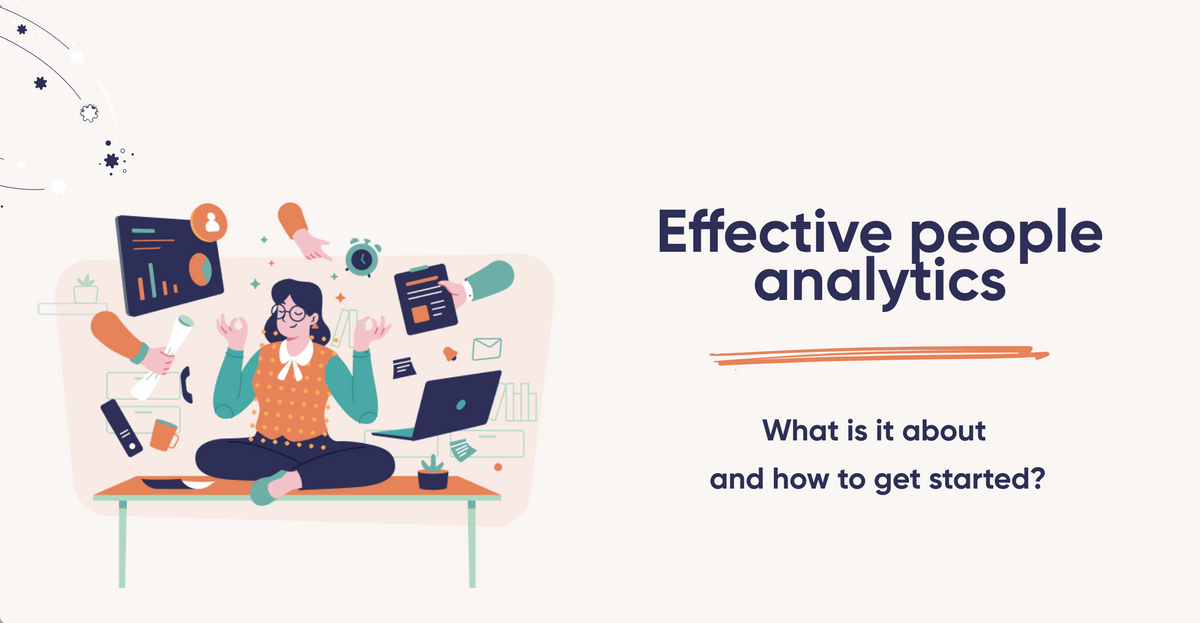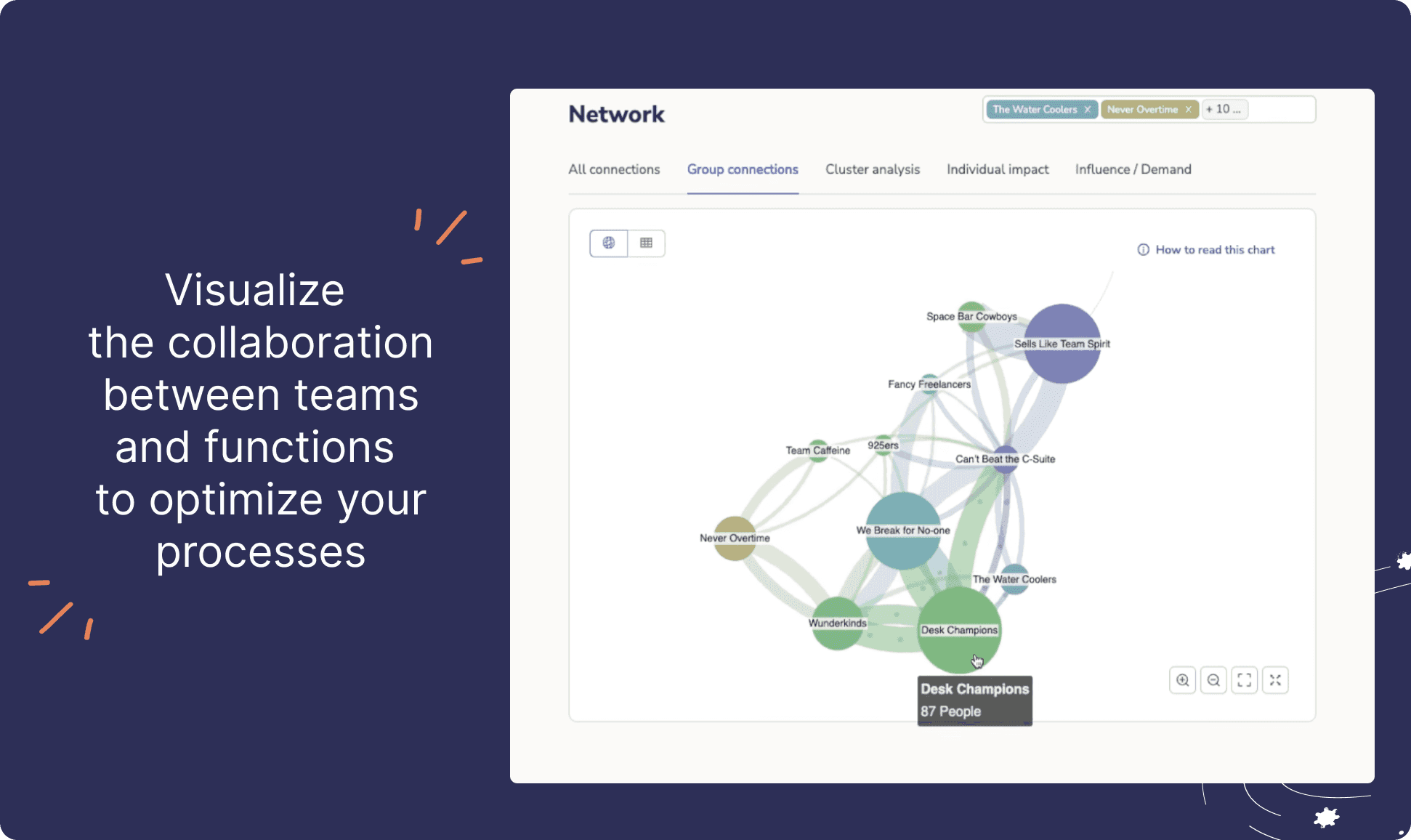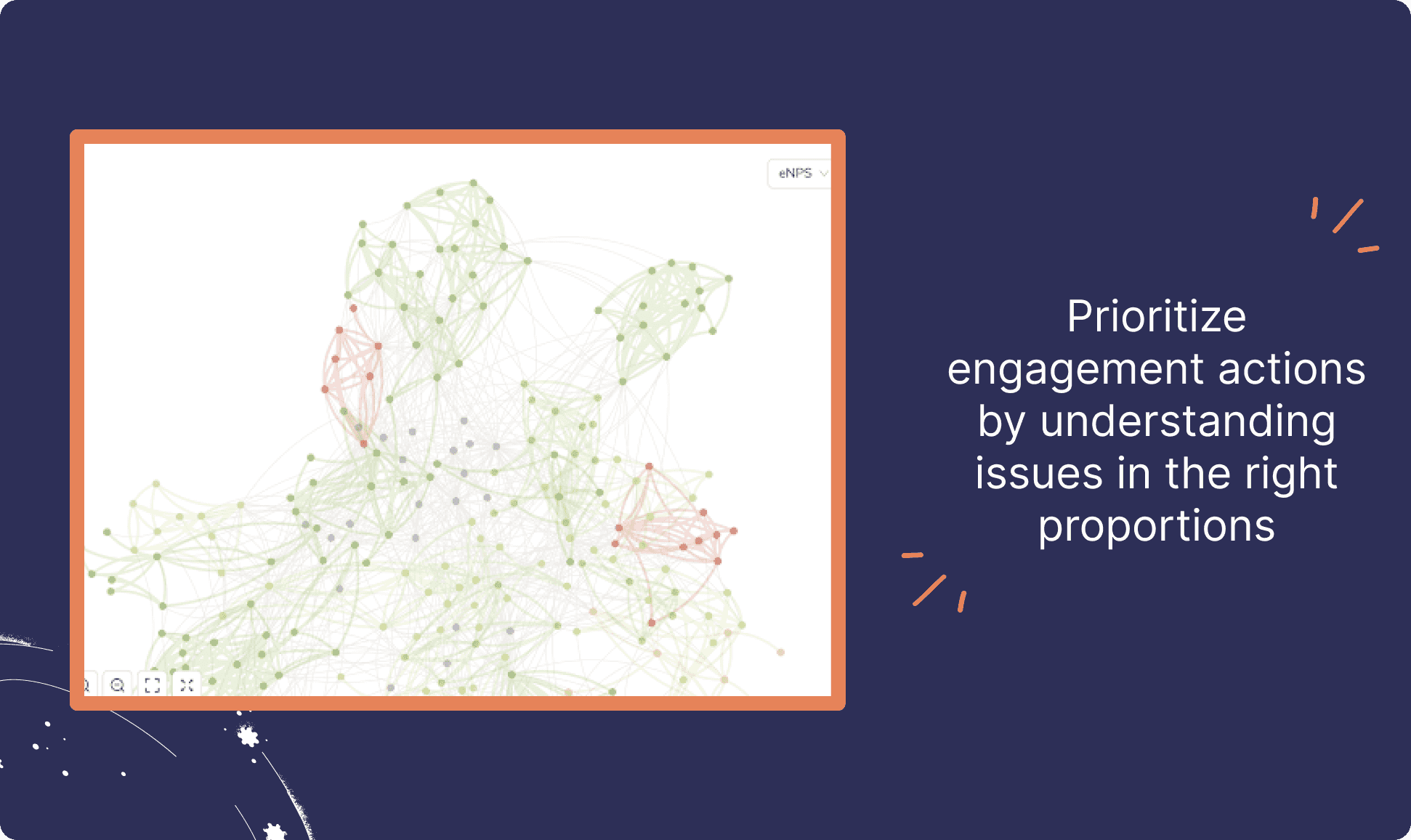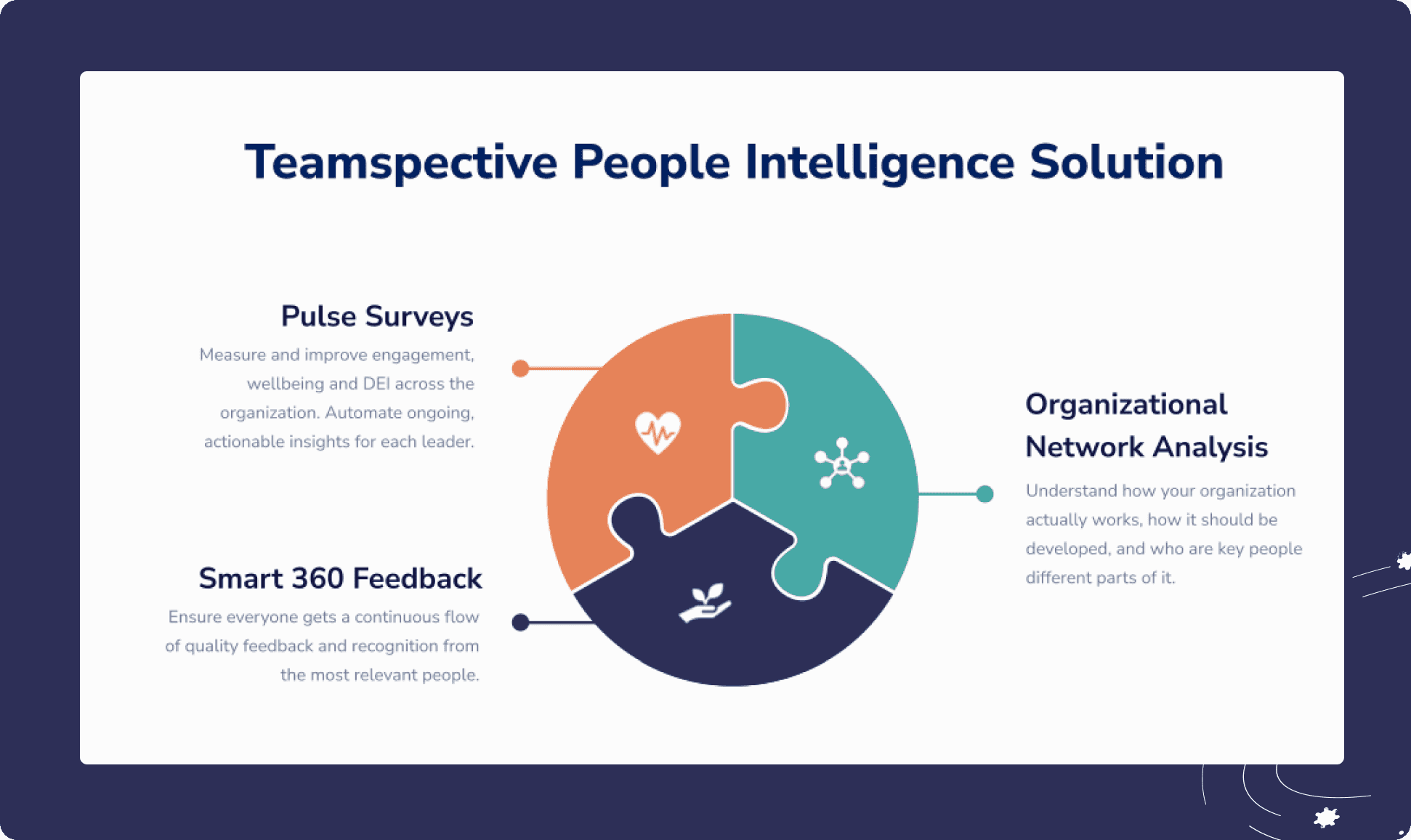How well do you understand your company’s people and your teams? Leaders typically rely on org charts, HR information system (HRIS) data, annual surveys, and their own intuition in trying to understand their organization as well as people’s wellbeing and engagement.
However, annual surveys and infrequent development discussions generate at best a momentary snapshot of the state of the company. Org charts and HRIS content might reflect management’s idea of how things should be, but are often not descriptive of reality. Fast-paced, constantly evolving operating environments call for a more continuous approach to understanding team dynamics and staying on the pulse of the organization.
What is people analytics?
Gartner defines people analytics as the collection and application of talent data to improve critical talent and business outcomes and to enable (HR) leaders to develop data-driven insights to inform talent decisions, improve workforce processes and promote positive employee experience.
At Teamspective, we consider people analytics to be a part of people intelligence: an around-the-year process of learning about organisation's real networks, measuring employee engagement and performance, and constantly taking actions based on this data. This approach creates multiple benefits:
- ability to react quickly to changes in employee sentiments,
- making data-backed improvements to the organizations structure and collaboration,
- creating a growth-oriented culture where continuous improvement is a habit,
- empowering teams to independently discuss their own improvement areas,
- reliable and unbiased performance data to support employee recognition and development.
These benefits empower companies to grow fast by leading wisely, retaining talent, and constantly improving employee wellbeing. People analytics can be considered the foundation of people intelligence and a great starting point for data-driven leadership.
How to build effective people analytics? 3 steps
Effective people analytics cannot be implemented in just a few days. We suggest 3 important steps for getting started.
1. Get used to collecting data
Answering a survey, writing a feedback or actively participating in wellbeing discussions always seem to be less of a priority than getting the actual job done. As a result, proper people analytics cannot happen due to low response rates and the need to ‘activate’ people. This becomes a bottleneck especially when data collection happens (bi)annually. To solve this challenge and get used to data collection, we recommend the following action points:
- Collect data regularly
For example, implement weekly/bi-weekly pulse surveys instead of annual ones. Regular surveys make answering a habit and companies can get exceptional response rates. For example, with Teamspective’s pulse surveys our clients typically achieve response rates above 75% with zero on-going maintenance effort from the HR team.
- Make data collection easy and interactive
Regular data collection won’t help if the surveys are long and boring. It is important to ask the right questions and make answering easy. We suggest integrating surveys to employees’ daily tools such as Slack or MS Teams. That’s what we did with Teamspective’s pulse surveys, and our users love it!
- Educate employees on the importance of people analytics
A growth-oriented company culture encourages employees to take pulse surveys seriously. Educate employees on the importance of people analytics by being transparent about results and action plans. Encourage managers to set a good example to their team members by showing what efforts are expected and by engaging team members in data analysis and discussions.
When employees utilize their own pulse survey results, for example on a monthly basis, answering feels much more purposeful. All too often, survey responses seem to disappear into a black box with no visibility into whether management does anything useful with the inputs.
2. Gradually implement other pieces of people intelligence
When data collection is going smoothly and leaders can independently improve their teams’ performance with data-driven discussions, it is time to implement additional people intelligence tools such as 360 Feedback, performance evaluations and Organisational Network Analysis (ONA). Here we focus on the example of Organisational Network Analysis due to its crucial role in supporting your organisation's growth.
Managers usually rely on their self-drafted organizational charts when considering their company structure. However, the real networks within the company can deviate wildly from this official picture, which at best represents management’s vision. What really matters is:
- Who talks to whom on a regular basis?
- How many people are dependent on constant support or other input from specific people? (This correlates strongly with workload issues)
- How smoothly does information flow between teams, especially ones whose work needs to be aligned?
- Which people play a central role in collaboration between teams or departments? (i.e. who are the connectors?)
Organisational Network Analysis answers these questions based on current data and helps you understand how teams can improve their collaboration, your key functions’ vulnerability to change, as well as which employees are the most influential. This knowledge empowers leaders to plan growth and structural changes in an informed way, improve team dynamics, and pre-empt employee churn.
Did Organisational Network Analysis perk your interest? See here how Teamspective can help.
3. Establish long-term vision and link all pieces together
Data collection, team discussions, organisational network analysis, and implementation of other tools are essential steps towards effective people analytics. However, making people intelligence your superpower requires linking these pieces together.
For example, combining your pulse survey data with Organisational Network Analysis empowers the leadership team to see trends in employee wellbeing beyond the official team structure. Managers are able to identify clusters within an organization that may need extra help in understanding goals, getting support, or simply managing work-life balance.
And there are tens of other examples of how different tools can complement each other! For example, smart feedback and recognition tools help you support employees who report low feedback satisfaction or motivation through pulse surveys while ONA helps to ensure that feedback flows are established between the most relevant people.
At Teamspective, we help you get started with the third generation of HR analytics technology. Our tools combine employee engagement, organisational network analysis (ONA), and Feedback & 360 Evaluations.
Teamspective’s people intelligence platform allows clients not only to collect people data in real-time but also to combine this data in order to gain deeper insights. If you are curious to see what ONA and real-time people intelligence could do for your company, get in touch with our experts today.





